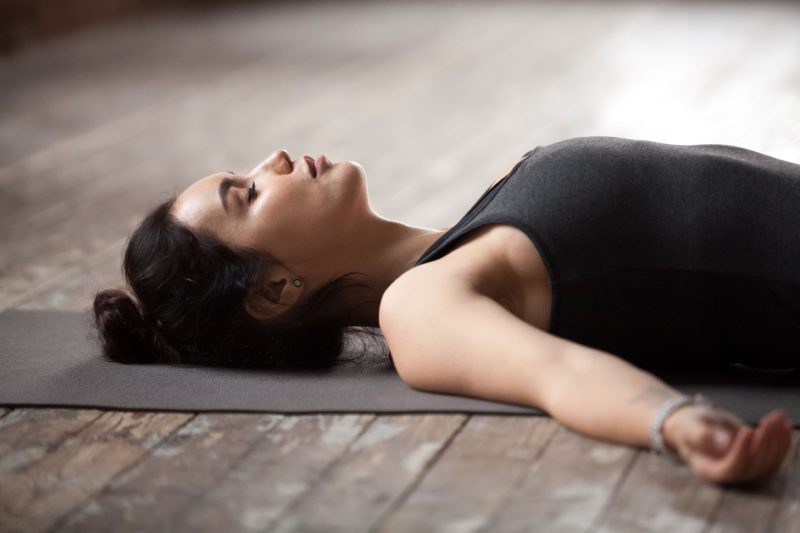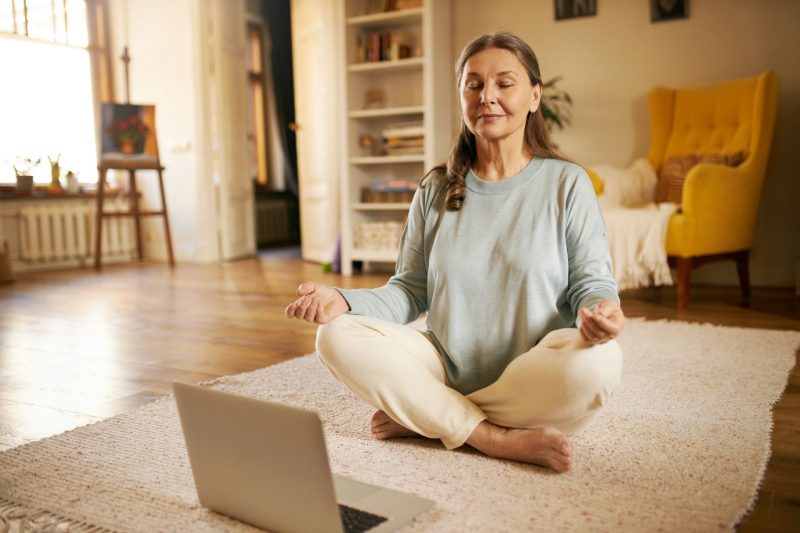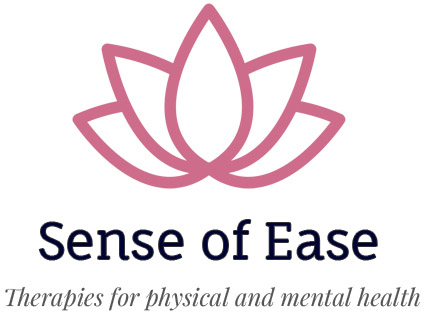Meditation
Mindfulness is the cultivation of attention and awareness of what is occurring within and outside of ourselves. The best way to increase your mindfulness is through the practice of Meditation.
Traditionally, Meditation could be described as a seated practice, which is concerned with stabilising the mind; to steady and quieten it.
 The Meditation Angela teaches begins in lying and explores the relevance and value of physical relaxation.
The Meditation Angela teaches begins in lying and explores the relevance and value of physical relaxation.
This somatic (body based) form of meditation relies solely on our willingness to sense and explore our bodies as they are. Through open and curious exploration we come to recognise many areas of holding and tension within the body and its tissues. As tension held in the body equates to tension in the mind – learning to let go of physical holding naturally leads to quietening of the mind.
Why is meditation useful? There is a strong tendency in human beings to want the pleasant, comfortable, predictable, secure feelings to be prevalent within our lives. If there is pain, discomfort, unease in any form we usually want to push it way away, or run from it. This is why many turn to meditation.
Meditation has the potential to transform how we are with stressful, difficult and challenging events that inevitably occur in life.
Would you would like to learn more about our mindfulness practices?
There are many different forms of meditation practice. Angela began to focus on body based meditation after years of what felt like ‘fighting’ with traditional seated meditation. In as much as to say, she knew through her Tai Chi training that in principle it was ‘good for her’. However, her experience in reality was that of it not feeling so..
She would force herself to sit for periods of time in a strained and rigid posture, frequently resulting in coccyx or back pain that progressively got worse over the years. She knows now that this was due to the excessive effort and tension that she was creating to sit in what she believed to be “correct meditation posture”.
Finding the work of meditation teachers Will Johnson, Reggie Ray and Willa Blythe Baker completely transformed Angela’s practice. Her meditation practice now has more ease and enjoyment that was not there before.
Angela has attended numerous courses and retreats which are focused specifically on somatic meditation such as Meditating with the Body, Somatic Practice of Pure Awareness and The Wakeful Body.
Would you would like to learn more about our meditation practices?
 The most foundational step of mindfulness & meditation, is to come to your body. Yet how many of us can actually come into our bodies in an authentic way?
The most foundational step of mindfulness & meditation, is to come to your body. Yet how many of us can actually come into our bodies in an authentic way?
Even with the simple instruction of “sit with a straight back, relax and come to the breath” which is found at the beginning of most meditation session. For me, there was so much tension in holding the straight back that this strain restricted any natural flow of breath. It just felt like something else I was getting wrong and needed to try harder at..
Through the body based (somatic) meditation, we come to explore and know that the strain and tension that we hold in the body equates to the same strain and tension in the mind also.
Body Based Meditation
The following are basic principles of body based meditation practice:
Alignment – Playing with alignment of the spine and body, in different postures. When the spine and skeleton are aligned, it allows gravity to become a helpful force rather than an opposing force… Less need to ‘hold’ ourselves.
Relaxation – Using different postures and the breath to explore tensions and holdings within our body. When we become aware of holdings we can learn to surrendering the weight of the body to the pull of gravity, allowing deeper relaxation and letting go. Safety is a key aspect to the practice of deep relaxation. We need to feel ‘safe’ to deeply let go and so this is the environment I aspire to provide.
Resilience – Surrendering to the natural movement of life! This is working with our awareness to realise how not to impose an unnatural stiffness on our posture. The understanding that comes through experience, is that nothing is fixed, everything moves and changes – especially the body! Resilience is the function of accepting and yielding to the forces of nature that affect and move us. This could be the force of gravity, the alive and vibratory sensations of the dance of our living cells, thoughts, emotions or something as simple as the movement of our breath through our body.
The above principles are applied initially in meditation practice, however, over time they become practice for everyday life.
Alignment – becoming aware of ‘what is’ in this moment. In doing so we can learn to align with it.
Relaxation – observe deeply what is happening. Can you relax/surrender/allow the experience of the moment?
Resilience – the practice of not becoming attached to the experience.. because whether considered a positive or a negative experience – this too shall pass.
Through Angela’s love and experience of working with the body for the past 20 years, along with the past decade of playing with meditation practices, she has the personal and professional expertise to teach meditation in 1- 1 sessions, classes or workshops settings.
These practices are suitable for all. Ranging from beginners who have never meditated before, to experienced practitioners who are wanting to explore the posture of meditation in more depth in order to deepen your practice.
